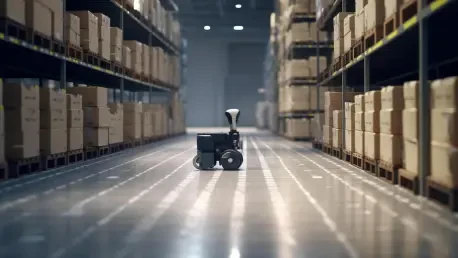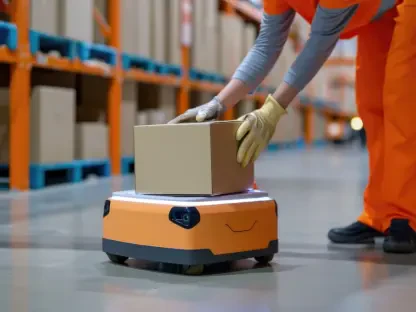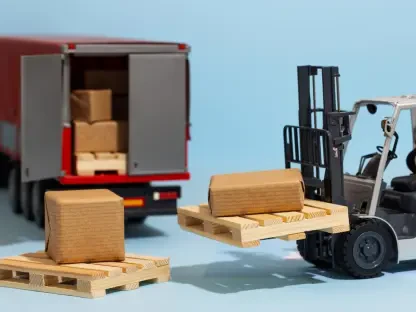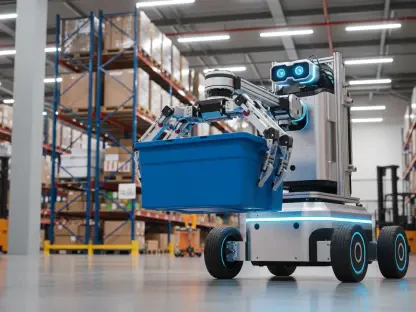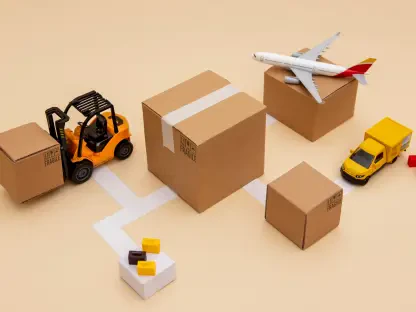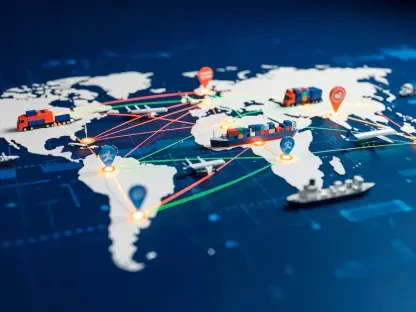In the sprawling realm of logistics and warehousing, the advent of Shelf-to-Person Robotics emerges as a pivotal innovation, reshaping order fulfillment paradigms. As industries grapple with escalating consumer demands and supply chain complexities, this technology offers a transformative solution. Leveraging cutting-edge automation, Shelf-to-Person Robotics enhances efficiency, accuracy, and safety, setting a benchmark for future-ready logistics. This review delves into the intricate workings and real-world impacts of this technology, examining its core features, recent advancements, and potential future trajectory.
An Overview of Shelf-to-Person Robotics
At its core, Shelf-to-Person Robotics is defined by a sophisticated deployment of advanced automation designed to streamline and optimize warehousing activities. The system is fundamentally built on robotic units that facilitate the efficient movement of inventory from storage directly to the human picker, minimizing unnecessary steps. This approach not only elevates productivity but also enhances power dynamics within logistical frameworks, aligning seamlessly with modern digitalization efforts. With roots in the pursuit of operational precision and quick returns on investment, this technology is gaining rapid traction across the logistics sector.
The emergence of Shelf-to-Person Robotics is intrinsically linked to a broader technological landscape marked by digital transformation and industrial automation. Their relevance extends across various dimensions, offering indispensable solutions to challenges in order accuracy, space optimization, and labor cost management. Additionally, these systems enable scalability, equipping organizations to effectively respond to rapidly changing consumer behaviors and industry demands.
Navigating Complex Systems and Managing Inventory
Navigation and Mobility Aspects
The crux of Shelf-to-Person systems lies in their robust navigation and mobility features, integral to their successful operation. These robots excel in executing seamless movements within complex warehouse environments, guided by advanced sensors and mapping algorithms that enable real-time adjustments. By ensuring precise and adaptable pathfinding, these features are pivotal in enhancing operational throughput.
Coordination and avoidance systems further augment their reliability and efficiency, enabling robots to autonomously avoid obstacles while maintaining optimal performance levels. This contributes to a safer working environment and reduces the likelihood of disruptions within the facility, preserving the integrity of ongoing operations.
Inventory Management and Efficiency
The inventory management capabilities of Shelf-to-Person systems provide a critical edge in maximizing warehouse operations. With technologically driven precision, these systems enhance the tracking and handling of stock, maintaining optimal inventory levels without interrupting workflows. Such precision reduces discrepancies and aligns with the industry pursuit of minimizing error margins.
Real-world deployments have consistently highlighted improved picking speeds and order accuracy, showcasing the system’s effectiveness. This translates to noticeable improvements in performance, underpinning the potential to substantially elevate the logistics domain.
Recent Developments and Industry Trends
The trajectory of Shelf-to-Person Robotics is characterized by several innovations and emerging trends that signal its continued evolution. Recent advancements in AI and machine learning have significantly improved robot intelligence, facilitating predictive analytics and adaptive learning capabilities. These enhancements further fine-tune the system’s efficiency, offering strategic advantages to adopters.
A perceptible shift towards flexible automation solutions is evident as organizations strive to minimize operational dependencies on manual labor. With labor market dynamics and consumer expectations undergoing transformation, adaptable systems like Shelf-to-Person Robotics are increasingly being sought for their ability to digitally transform warehouse functionality.
Deploying Robust Technologies Across Industries
Industries across the spectrum are witnessing the practical benefits of Shelf-to-Person Robotics in transforming their operational capabilities. In particular, third-party logistics providers are spearheading this integration, as evident in Yusen Logistics’ strategic overhaul of warehouse operations. Through collaboration with Geek+ and Logistex, the implementation of P800 V6.0 robots demonstrates a commitment to leveraging automation in boosting efficiency and customer satisfaction.
These robots have revitalized space utilization, reduced overheads, and bolstered order fulfillment processes, illustrating the potential for wide adoption across retail, e-commerce, and manufacturing sectors. The seamless implementation of this technology in practical settings reinforces its standing as a game-changer in large-scale logistics operations.
Addressing Constraints and Overcoming Barriers
Despite the significant promise, Shelf-to-Person Robotics faces challenges that require ongoing attention and refinement. Technical barriers, including high initial costs and integration challenges, pose constraints that could hinder widespread implementation. Moreover, compliance with evolving regulatory standards is an area of focus, necessitating proactive efforts from industry stakeholders.
Steps are being taken to overcome these hurdles, with innovations aimed at cost reduction and increasing accessibility. Continued dialogue between policymakers, industry experts, and technology creators remains crucial to dismantling these barriers for wider acceptance and utilization.
Anticipating the Horizon for Shelf-to-Person Robotics
Looking ahead, planned advancements in Shelf-to-Person Robotics suggest a trajectory filled with unprecedented opportunities for innovation in the logistics industry. Developments across AI, IoT, and connectivity are poised to steer this technology into new domains of efficiency and intelligence. Enhanced interoperability among different robotic systems will likely drive greater synergies across industries.
This technology can have a deep impact, fostering societal and industrial transformation as automation becomes increasingly integrated into daily operations. It offers the potential to reshape business models, leading to more resilient supply chains and a competitive edge for early adopters committed to future-focused logistics strategies.
Assessing the Impact and Future Pathways
In sum, Shelf-to-Person Robotics represents a transformative frontier for modern logistics, redefining operational paradigms with its potent amalgamation of advanced automation and digital intelligence. Current deployments reflect a commitment to innovation, evident in their practical applications and strategic enhancements to operational workflows. While challenges must be addressed, the strides in technological development ground this technology in promising potential.
Continued evolution and strategic partnerships could ensure that Shelf-to-Person Robotics remains an integral component of the logistics landscape. As industries adapt to disruptive changes, this technology’s ability to offer improved accuracy, efficiency, and adaptability will be indispensable for sustaining competitive advantage and driving innovation across the sector.
